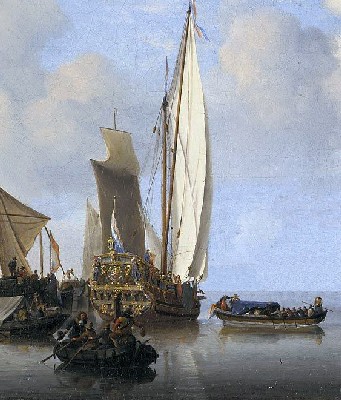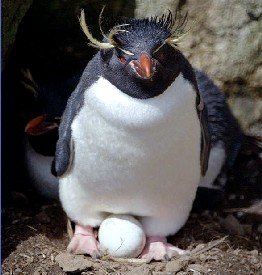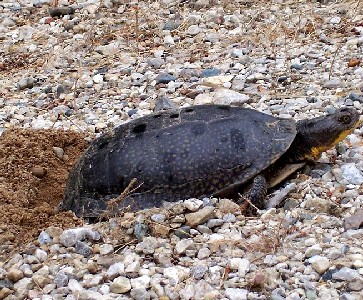
Eggs and Medicine: 1 2 3 4 Next>>
Eggs in Medicine During the Golden Age of Piracy, Page 2
Obtaining Eggs While Shipboard
The biggest problem with having eggs while on a long journey would have been how to keep them from spoiling. Fresh foods lasted only a few weeks at the most after leaving land and there were no methods for refrigerating them. Ship's captains were not inclined to make landfall if it wasn't necessary. The logical solution for those desiring fresh eggs while on a ship seems to be to keep chickens on board.

"Rooster and Hens",
by Aelbert Cuyp (17th c)
There are several period references for keeping live animals shipboard. Clergyman Henry Teonge mentions "our hen-coops" being washed overboard during a storm in 1676.1 Friar Domingo Navarette talks about another disaster that deprived the religious from their sea-going fowl fruit, explaining how a fire burnt "our Hen-roost, and burnt near 300 [hens] so that we lost the Refreshment of our Voyage."2 Sea Captain Edward Barlow also details the loss of livestock at sea in his account from 1699. A wave "...driving to and fro and doing much damage and loss in our fresh provisions, having "drownded" a hundred fowls, hens, cocks, turkeys and geese..."3 Merchant seaman Edward Coxere gives proof that sailors would have bought hens for keeping, explaining that while he was in Santa Cruz (Barbary) "...for one piece of eight I bought above twenty hens and cocks and barley to feed them with."4 Perhaps the most vivid (and non-disasterous] account of chicken-keeping comes from yet another religious figure, Father (Pére) Labat: " [In Cadiz] ...the Spaniards suppose that any vessel coming from a long voyage must be short of everything. These men were therefore surprised when they saw our pens of full of chickens, pigs, sheep and goats that there was sufficient live stock on board for a return voyage to America."5 However, he also explains, "It is quite true that every ship is not always so well provisioned as we were."6

From "Ships on the Roadstead" by Willem van de Velde II
There is also period evidence of sailors trading for or purchasing eggs when making landfall or arriving in a port.
On December 6th of 1687, privateer William Dampier tells us that "...betimes a great many Boats and Canoas came aboard [from Boutan], with Fowls, Eggs, Plantains, Potatoes &c, but they would dispose of none till they had Orders for it from the Sultan, at his coming."7 Henry Teonge gives a similar account explaining that, "I went with our Captain to the town-side, but they would not give us leave to come ashore. But they brought to us good wine, lemons, oranges, pome-citrons, sheep, hens, eggs, coleworts, etc., and sold them cheap enough."8 William Funnell rounds out the egg from shore trading references with, " Being in so near [the Island Magon, Mariana Islands], we laid our Ship by; and several fishing Boats came to us, and brought us some Fish, with some Eggs, Yams, Potatoes, &c. These were very acceptable to us; for now our Salt Beef and Pork was just at an end; and we had nothing to trust to, but our half pound of Flower a Day for each Man, and that very full of Vermine, Maggots and Spiders."9 That quotes makes eggs (not to mention other fresh foodstuffs) sound very acceptable, indeed!

"Don't even think about it."
The last way eggs might have been obtained is by sailors gathering them from whereever they happened to land. Ship's captains often needed to make landfall in non-populated areas to gather fresh water and wood to make spars and masts from. The wild animals they found on these stops sometimes resulted in food experimentation, with sailors trying the eggs of various species.
Captain Uring tells of eggs of the 'Guanoe' [most likely an iguana.] "A Guanoe is something like a Lizard; I have often killed "em of Five Foot long, which we reckon pretty good eating, but their Eggs exceed all others in Taste, and et like Marrow."10 In 1691, William Dampier explained that "Ostriges are plentifully found in the dry Mountains and Plains. I eat of their Eggs here... The Meat of one of their Eggs will suffice two Men very well."11 In 1669, Captain John Wood informed the world that, "[Penguin] Eggs are somewhat less than those of Geese... we gathered about 100000 of the Eggs, some whereof we kept in our Ship four Months very good:"12
Of course the premier wild animal from which fresh eggs were harvested was the turtle. Turtles are mentioned in many of the period Caribbean references as being food source unparalleled because of their flavor, availability and easiness

to catch. Francis Rogers explained in 1705 "…the choice of all for fine eating is the turtle... It is an amphibious creature, going on shore anight (in the season) to lay its eggs, which it does in the sand, and covers them up and so leaves the sun to hatch them; their eggs are like a hen"s egg, without the shell; they'll lay 200 or more, and are very good."13 Privateer Edward Cooke concurs, noting that the turtle's "Eggs are round, about the Bigness of Hens Eggs, and well-relish"d."14 William Funnell chimes in with "Both the Eggs and the Turtle are extraordinary good Food; as I have experienced many times."15
Of course, tastes are not all the same. Edward Barlow's opinion runs in the other direction. However, he does give us a bit more information on how to eat them. "[Turtle's] eggs are not so good as the flesh of them, it being very good and wholesome and very sweet, making excellent good broth. Their eggs are not like hens" eggs, but are as round as a ball, and their shell is white, and a kind of tough thick skin over them, but when the shell is dry it will break like another egg shell."16
Having thus established the egg as a popular foodstuff and one that was at least sometimes available on a ship, let us take a look at their medicinal properties.
1 Henry Teonge, The Diary of Henry Teonge, Chaplain on Board H.M.’s Ships Assistance, Bristol, and Royal Oak, 1675-1679, p. 190; 2 Domingo Navarrete, The Travels and Controversies of Friar Domingo Navarrete 1618-1686, p. 40; 3 Edward Barlow, Barlow’s Journal of his Life at Sea in King’s Ships, East and West Indiamen & Other Merchantman From 1659 to 1703, p. 508; 4 Edward Coxere, Adventures by Sea of Edward Coxere, p. 107; 5 Pierre Labat, The Memoirs of Pére Labat 1693-1705, p. 262 6 Ibid. 7 William Dampier, Memoirs of a Buccaneer, Dampier's New Voyage Round the World, p. 306; 8 Teonge, p.231; 9 William Funnell, A Voyage Round the World, p. 226; 10 Nathaniel Uring, A history of the voyages and travels of Capt. Nathaniel Uring, p. 161; 11 Dampier, p. 356; 12 John Wood, Captain Wood’s Voyage Through the Streights of Magellan, &c., from William Hacke’s A collection of original voyages, p. 62; 13 Francis Rogers. from Bruce S. Ingram's book Three Sea Journals of stuart times, 1936, p. 230; 14 Edward Cooke, A Voyage to the South Sea and Round the World in the Years 1708 to 1711; 15 Funnel, p. 73; 16 Barlow, p. 201

